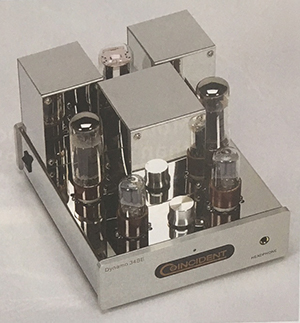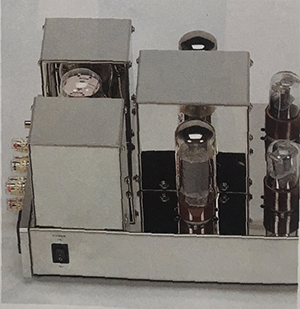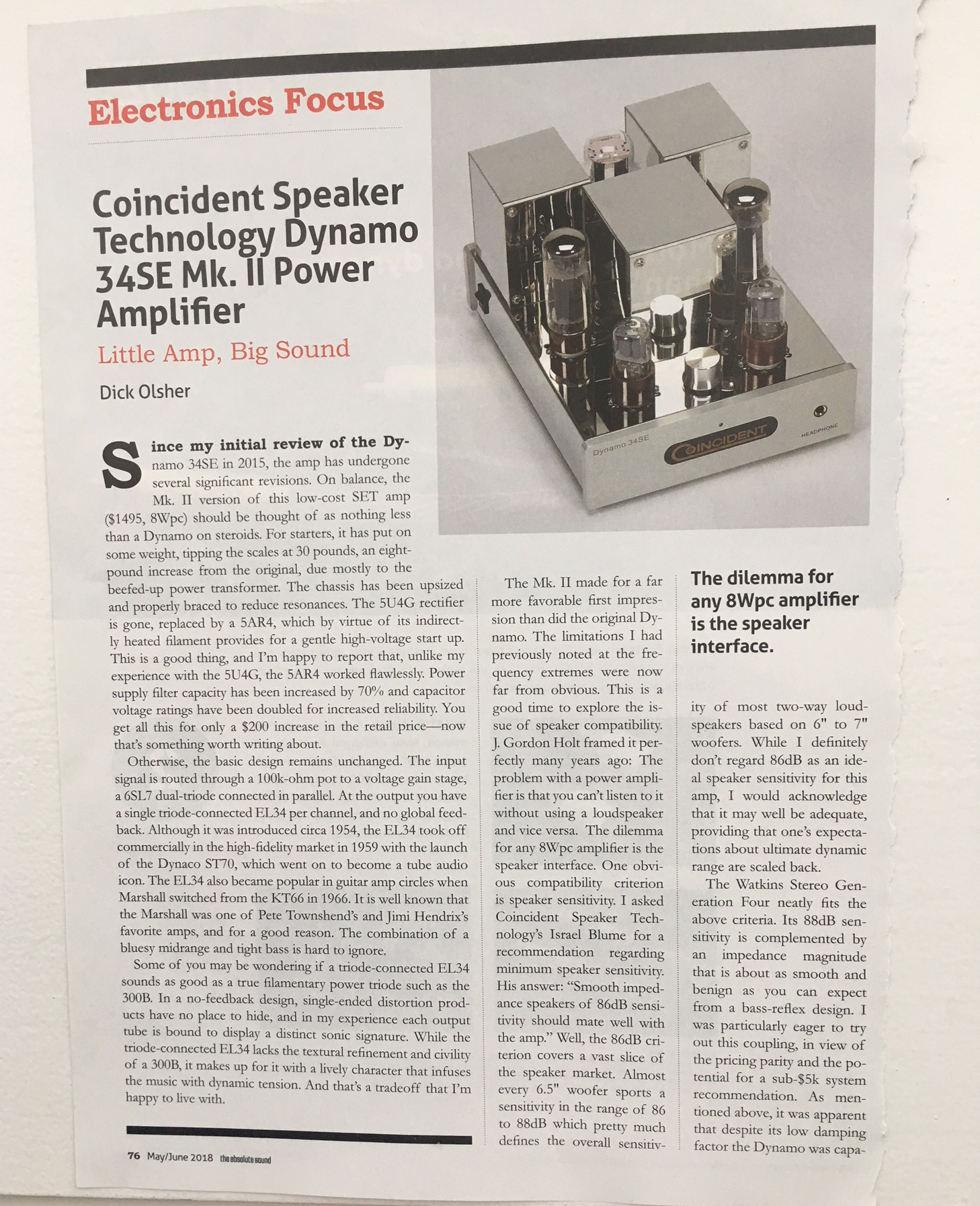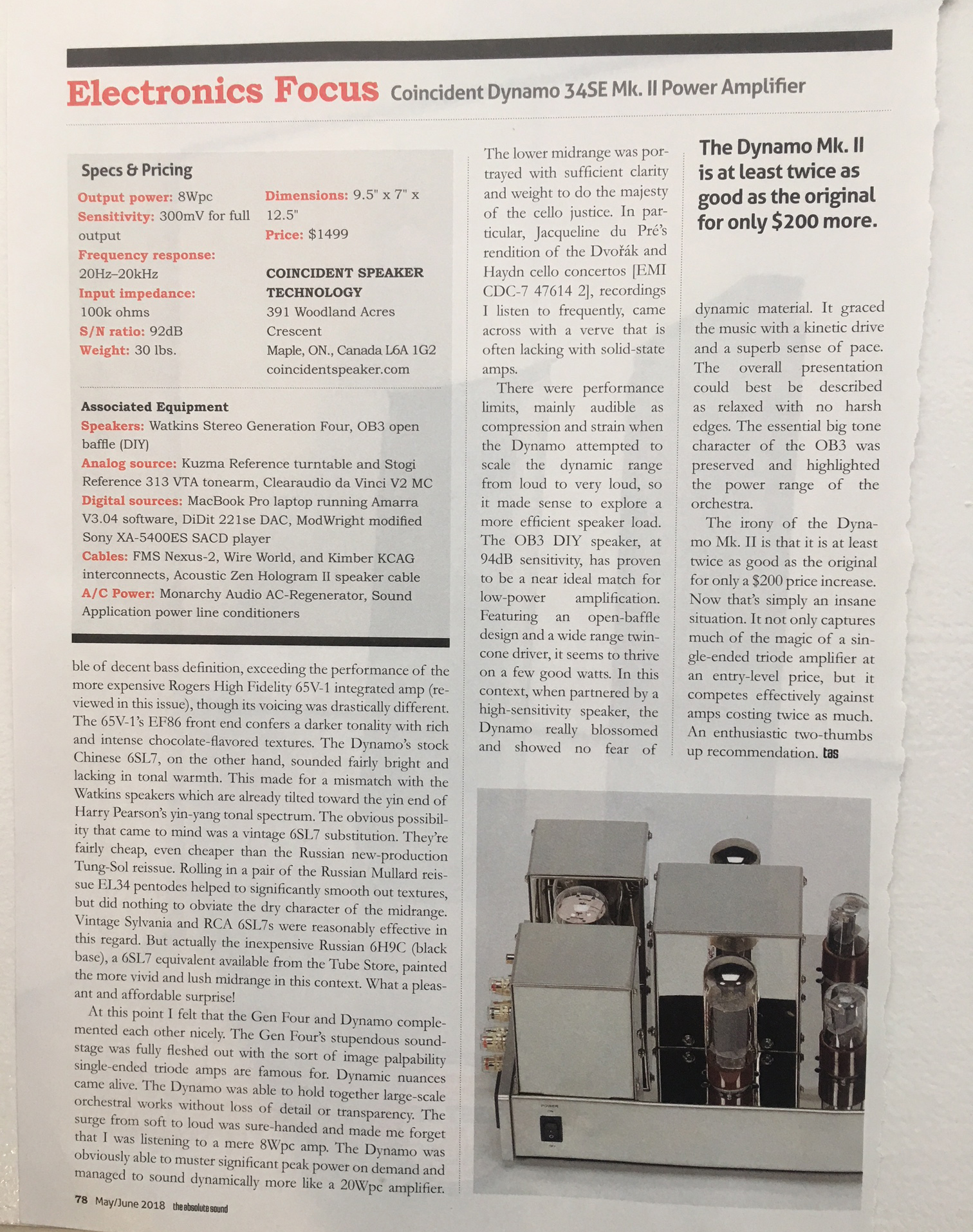Coincident Speaker Technology
Dynamo 34SE MK II Power Amplifier
Little Amp, Big Sound
By Dick Olsher, The Absolute Sound

Since my initial review of the Dynamo 34SE in 2015, the amp has
undergone several significant revisions. On balance, the Mk. II
version of this low-cost SET amp ($1495, 8Wpc) should be thought
of as nothing less than a Dynamo on steroids. For starters, it
has put on some weight, tipping the scales at 30 pounds, an
eight-pound increase from the original, due mostly to the
beefed-up power transformer. The chassis has been upsized and
properly braced to reduce resonances. The 5U4G rectifier is
gone, replaced by a 5AR4, which by virtue of its indirectly
heated filament provides for a gentle high-voltage start up.
This is a good thing, and I'm happy to report that, unlike my
experience with the 5U4G, the 5AR4 worked flawlessly. Power
supply filter capacity has been increased by 70% and capacitor
voltage ratings have been doubled for increased reliability. you
get all this for only a $200 increase in retail price- now
that's something worth writing about.
Otherwise, the basic design remains unchanged. The input signal
is routed through a 100k-ohm pot to a voltage gain stage, a 6SL7
dual-triode connected in parallel. At the output you have a
single triode-connected EL34 per channel, and no global
feedback.
Although it was introduced circa 1954, the EL34 took off
commercially in the high-fidelity market in 1959 with the launch
of the Dynaco ST70, which went on to become a tube audio icon.
The EL34 also became popular in guitar amp circles when Marshall
switched from the KT66 in 1966. It is well known that the
Marshall was one of Pete Townshend's and Jimi Hendrix's favorite
amps, and for a good reason. The combination of a bluesy
midrange and tight base is hard to ignore.
Some of you may be wondering if a triode-connected EL34 sounds as
good as a true filamentary power triode such as the 300B. In a
no-feedback design, single ended distortion products have no
place to hide, and in my experience each output tube is bound to
display a distinct sonic signature. While the triode-connected
EL34 lacks the textural refinement and civility of a 300B, it
makes up for it with a lively character that infuses the music
with dynamic tension. And that's a tradeoff that I'm happy to
live with.
The dilemma for any 8Wpc amplifier is the speaker
interface.
The Mk. II made for a far more favorable first impressions than
did the original Dynamo. The limitations I had previously noted
at the frequency extremes were now far from obvious. This is a
good time to explore the issue of speaker compatibility. J.
Gordon Holt framed it perfectly many years ago: The problem with
a power amplifier is that you can't listen to it without using a
loudspeaker and vice versa. The dilemma for any 8Wpc amplifier
is the speaker interface. One obvious compatibility criterion is
speaker sensitivity. I asked Coincident Speaker Technology's
Israel Blume for a recommendation regarding minimum speaker
sensitivity. His answer: "Smooth impedance speakers of 86dB
sensitivity should mate well with the amp." Well, the 86dB
criterion covers a vast slice of the speaker market. Almost
every 6.5" woofer sports a sensitivity in the range of 86 to
88dB which pretty much defines the overall sensitivity of most
two-way loudspeakers based on 6" to 7" woofers. While I
definitely don't regard 86dB as an ideal speaker sensitivity for
this amp, I would acknowledge that it may well be adequate
providing that one's expectations about ultimate dynamic range
are scaled back.
The Watkins Stereo Generation Four neatly fits the above
criteria. Its 88dB sensitivity is complemented by an impedance
magnitude that is about as smooth and benign as you can expect
from a bass-reflex design. I was particularly eager to try out
this coupling, in view of the pricing parity and the potential
for a sub-$5k system recommendation. As mentioned above, it was
apparent that despite it's low damping factor the Dynamo was
capable of decent bass definition, exceeding the performance of
the more expensive Rogers High Fidelity 65V-1 integrated amp
(reviewed in this issue), though it's voicing was drastically
different. The 65V-1's EF86 front end confers a darker tonality
with rich and intense chocolate-flavored textures. The Dynamo's
stock Chinese 6SL7, on the other hand, sounded fairly bright and
lacking in tonal warmth. This made for a mismatch with the
Watkins speakers which are already tilted toward the yin end of
Harry Pearson's yin-yang tonal spectrum. The obvious possibility
that came to mind was a vintage 6SL7 substitution. They're
fairly cheap, even cheaper than the Russian Mullard reissue EL34
pentodes helped to significantly smooth out textures, but did
nothing to obviate the dry character of the midrange. Vintage
Sylvania and RCA 6SL7s were reasonably effective in this
regards. But actually the inexpensive Russian 6H9C (black base),
a 6SL7 equivalent available from the Tube Store, painted the
more vivid and lush midrange in this context. What a pleasant
and affordable surprise!
The Dynamo Mk. II is at least twice as good as the original for only $200 more.
At this point I felt that the Gen Four and Dynamo complemented
each other nicely. The Gen Four's stupendous sound-stage was
fully fleshed out with the sort of image palpability
single-ended triode amps are famous for. Dynamic nuances came
alive. The Dynamo was able to hold together large-scale
orchestral works without loss of detail or transparency. The
surge from soft to load was sure-handed and made me forget that
I was listening to a mere 8Wpc amp. The Dynamo was obviously
able to muster significant peak power on demand and managed to
sound dynamically more like a 20Wpc amplifier. The lower
midrange
was portrayed with sufficient clarity and weight to do the
majesty of the cello justice. In particular, Jacqueline du Pré's
rendition of the Dvořák and Haydn cello concertos [EMI CDC-7
47614 2], recordings I listen to frequently, came across with a
verve that is often lacking with solid-state amps.

There were performance limits, mainly audible as compression and
strain when the Dynamo attempted to scale the dynamic range from
loud to very loud, so it made sense to explore a more efficient
speaker load. The OB3 DIY speaker, at 94dB sensitivity, has
proven to be near ideal match for low-power amplification.
Featuring an open-baffle design and a wide range twin-cone
driver, it seems to thrive on a few good watts. In this context,
when partnered by a high-sensitivity speaker, the Dynamo really
blossomed and showed no fear of dynamic material. It graced the
music with a kinetic drive and a superb sense of pace. The
overall presentation could be described as relaxed with no harsh
edges. The essential big tone character of the OB3 was preserved
and highlighted the power range of the orchestra.
The irony of the Dynamo Mk. II is that it is at least twice as
good as the original for only a $200 price increase. Now that's
simple an insane situation. It not only captures much of the
magic of a single-ended triode amplifier at an entry-level
price, but it competes effectively against amps costing twice as
much. An enthusiastic two-thumbs up recommendation.
Specs & Pricing
Output Power : 8Wpc
Sensitivity: 300mV for full output
Output impedance : 4, 8 ohms
Frequency response: 20Hz-20kHz
Input impedance : 100K ohms
S/N Ratio: 92dB
Weight: 30 lbs
Dimensions : 9.5" x 7" x 12.5"
Price: $1499 US
Coincident Speaker Technology
391 Woodland Acres Crescent
Maple, ON., Canada L6A 1G2
coincidentspeaker.com


Click the images to view original article.




![]()




![]()